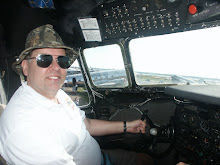 |
A50-3S standing tall and
straight next to the house. |
Last year, I moved the A50-3S
out of the yard and up next to the house. I used a 19 foot mast made of two pieces of EMT. While putting it up the reflector bumped against the roof and turned askew about 15 degrees.
Never the less, it worked well. I worked a few Europeans and several South and Central American using this antenna.
Still, it needed a bit of work. A one-piece mast would be better, and I could straighten out the reflector when I swapped masts. A bead balun at the feed point wouldn't hurt either.
So, I researched these. You would not believe what a 20 foot piece of 1 1/2" 0.058 wall aluminum tubing goes for these days. A few years ago, I purchased a 12 foot piece of 2" diameter 1/4" wall 6061-T6 tubing for my gin pole. It was about $150, which seems right for such a substantial piece of metal.
But 20 feet of the thinner mast? They quoted me $500! If I went with the 1/4" wall, well that was manufactured with a different process -- extruded instead of rolled, so it would be $250. Ridiculous. There had to be another solution.
I did have 20 feet of mast in two 10 foot pieces. This was from an earlier experiment. I had an old Butternut HF4B that I had rebuilt, and was hoping to erect in Fulton County. I bought two pieces of Rigid Metal Conduit (RMC) for this purpose.
EMT and RMC are easily found at your local Home Depot. But it isn't exactly what you would call structural. EMT is design to bend. Easily. I have had some success using it as masting for very small, light antennas. The two pieces I used on the A50-3S lasted for over eight years, plus the several years holding up a 19 element 2m boomer Yagi. RMC is more substantial, and comes with threaded couplings to connect them together.
Two pieces of 10 foot RMC was $30 a pop, so this wasn't a cheap experiment. Even with the coupling tightened all the way down, the 20 feet of mast had a substantial wobble in the top section. I tried inserting a solid piece of HDPE. That helped, but not enough to hold up the HF4B.
It occurred to me that this might work with the A50-3S, even with the wobble. The A50-3S is held upright by a wall bracket at the eve of the house, well above the wobbly union. I just needed the vertical support, and not so much lateral rigidity. Besides, I already had $60 invested.
First order of business was to find the doggone things. I put them away three parsonage moves ago, and had hidden them well. They were hiding in my basement. After that, I had to locate the piece of HDPE, which I found in another box.
It all came together this week. My youngest daughter Lauren helped me to lower the existing A50-3S and mast to the ground. Off came the antenna and the feed line, and the old mast was disassembled and put away. Then I coupled the RMC together with the HDPE stiffener and taped the coupling joints against any water intrusion. With the A50-3S mounted on the new mast, the reflector was aligned with the rest of the elements.
For a balun, I used five snap-on ferrite beads. I measured these at about 100 ohms resistive at 50 MHz. Five conveniently fit on the 9913 coax from the driven element to the mast, so that is what I used.
 |
A50-3S facing South East.
|
Swinging the new mast up into place without bashing the antenna against the house took some patience. The RMC mast is much heavier than the two pieces of EMT. Once vertical, I positioned the mast in the eve bracket and loosely connected the u-bolt clamp. Both my daughter and I lifted the assembly to the top of the railing. From there, I tightened the bracket to eliminate play, but loose enough to allow the antenna to rotate. I used a couple of extra 1/4" nuts as jam nuts so the bracket could not tighten or loosen.
The antenna is easily Armstrong rotated from the base. Eventually, I'll mount a rotator on the top of the railing and retire my arms.
A quick SWR check showed a 1.2:1 SWR at 50.313 MHz. The antenna is pretty broad. Minimum SWR is around 50.8 MHz at 1.07:1. I suppose I could mess with the matching network to get a better match on the FT8 frequency, but the whole bottom 2 MHz of 6m is less than 1.5:1.
The antenna is 28 feet (8.5m) off the ground with clear shots from the North clockwise to the South West. Points to the West and North West have to pass through the house roof.
I hope Es season hasn't passed me over yet.


